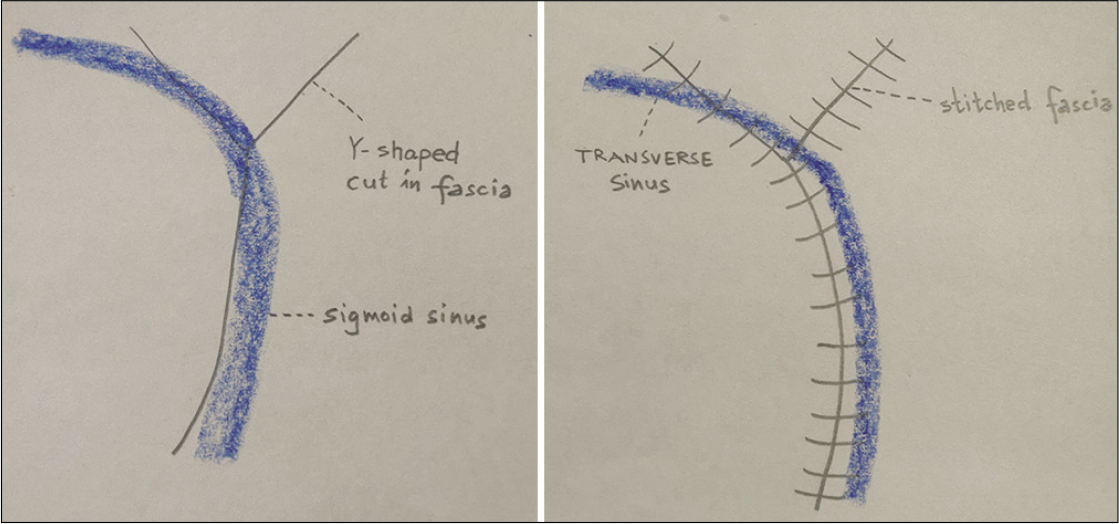- Department of Neurosurgery, Jawaharlal Nehru Medical College, AMU, Aligarh, Uttar Pradesh, India.
Correspondence Address:
Ahmed Ansari, Department of Neurosurgery, Jawaharlal Nehru Medical College, AMU, Aligarh, Uttar Pradesh, India.
DOI:10.25259/SNI_631_2021
Copyright: © 2022 Surgical Neurology International This is an open-access article distributed under the terms of the Creative Commons Attribution-Non Commercial-Share Alike 4.0 License, which allows others to remix, transform, and build upon the work non-commercially, as long as the author is credited and the new creations are licensed under the identical terms.How to cite this article: Ansari A, Sharma RM, Khan MT, Huda MF. Factors associated with cerebrospinal fluid leak after retrosigmoid approach. Surg Neurol Int 10-Jun-2022;13:240
How to cite this URL: Ansari A, Sharma RM, Khan MT, Huda MF. Factors associated with cerebrospinal fluid leak after retrosigmoid approach. Surg Neurol Int 10-Jun-2022;13:240. Available from: https://surgicalneurologyint.com/surgicalint-articles/11651/
Dear Editor,
We read with great interest the article by Montano et al.[
However, we do believe that one of the most consistent contributors in CSF leak following retrosigmoid approach is the opening method and closure of fascia following surgery. We perform a Y-shaped opening of the fascia, with the two limbs of Y-above the transverse sinus, which is not reflected from the bone. At the time of closure, both the limbs are approximated together with the vertical limb of Y-giving it a further tight sealant effect [
Declaration of patient consent
Patient’s consent not required as there are no patients in this study.
Financial support and sponsorship
Nil.
Conflicts of interest
There are no conflicts of interest.
References
1. Montano N, Signorelli F, Giordano M, D’Onofrio FG, Izzo A, D’Ercole M. Factors associated with cerebrospinal fluid leak after a retrosigmoid approach for cerebellopontine angle surgery. Surg Neurol Int. 2021. 12: 258






